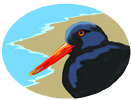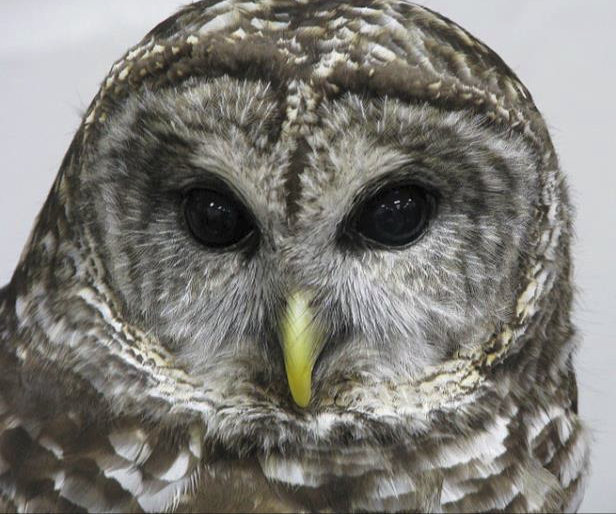"Who cooks for you, who cooks for you-all" is the vocalization of the Barred Owl. It is very similar to our Spotted Owl, but larger and more aggressive. The Barred Owl can be more than 24 inches tall and have a wingspan of up to 49 inches. It has a round head, yellow beak and large dark eyes. The brown back is spotted; the front has horizontal bars on the upper chest and vertical bars on the belly.
Barred Owls are nocturnal hunters. Their exceptional hearing allows them to pick up squeaks from 50 yards away. They eat mostly mice but also chipmunks, flying squirrels, rabbits, opossums and gray foxes.
They nest in cavities or broken tree tops, but also will use abandoned raven and hawk nests. The male feeds the female while she incubates 2 or 3 eggs for about a month. They usually nest every other year. Parents will care for the young for more than four months.
Barred Owls are not native to local forests, having arrived here from the East, as a result of development and increased logging, in the last part of the 20th century. They nest in parks and in neighborhoods with tall trees. Barred Owls compete for habitat with native Spotted Owls. Interbreeding with Spotted Owls has produced hybrids called “Sparred Owls” or “Botted Owls.” The hybrids are sterile, thus further threatening Spotted Owls.
A controversial four-year experiment, in which scientists are killing Barred Owls in 2% of the Spotted Owl habitat in Washington, Oregon and Northern California, is under way.
Photo by Photograph by Terren, wikimedia commons


